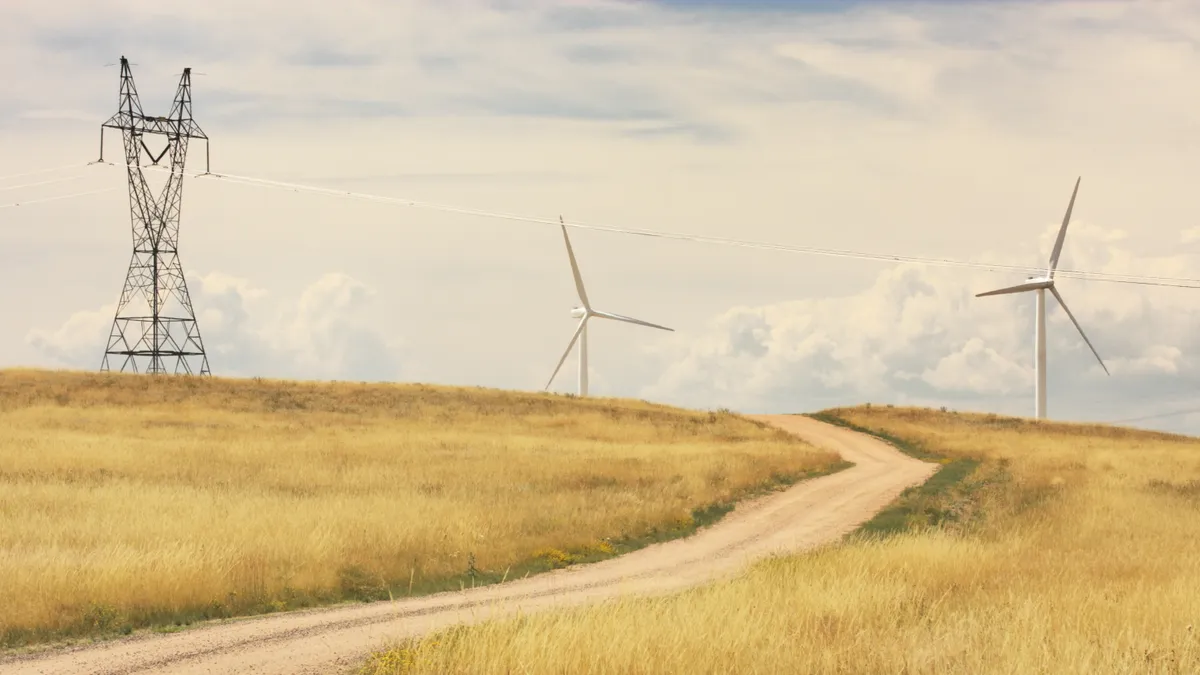Dive Brief:
- Extreme weather is becoming more common and energy disruptions seen in California last August and in Texas this February "should serve as a wake-up call for the rest of the country," North American Electric Reliability Corp. (NERC) Director of Reliability Assessments and System Analysis John Moura said Friday in a call with reporters.
- NERC said its 2021 Long Term Reliability Assessment found a "high probability of insufficient resources and energy to serve electricity demand" in the Western Interconnection this summer. And a reserve margin shortfall on the Midcontinent Independent System Operator's (MISO) grid will occur sooner than previously expected, due to generation retirements.
- Electric grid instability is being driven by the shuttering of older plants and the addition of new variable resources, combined with extreme weather, said NERC. The National Mining Association responded to the report saying that the coal fleet "offers invaluable optionality to the grid, shielding consumers from natural gas price volatility."
Dive Insight:
Extreme weather could cause relatively brief energy disruptions in multiple areas this summer, but the headline of NERC's reliability report is a looming capacity shortfall in MISO — as soon as 2024, rather than in 2025 as NERC's previous report anticipated.
MISO could lose more than 13 GW of resource capacity over the 2021–2024 period, according to the reliability assessment, potentially including 10.5 GW of coal-fired generation and 2.4 GW of gas. "A capacity shortfall of over 560 MW in 2024 would result if all of these unconfirmed retirements were to occur without additional new generation resources," NERC concluded.
"The retirement of these traditional resources also accelerates the change in resource mix and punctuates the urgency for implementing resource adequacy and energy sufficiency initiatives in the area," the report concluded.
MISO confirmed that NERC's assessment "is in line with" the results of its 2021 annual resource adequacy survey.
"MISO is facing a reliability imperative as the region undergoes transformational change, with sizeable segments of generation aging, the resource portfolio shifting to increasing amounts of wind and solar, and load shapes potentially changing with electrification," the grid operator said in an emailed statement. "We are preparing for the transition to a very different fleet in the future as these resources continue to set records for our generator interconnection queue."
A spokesperson for MISO said that in November the grid operator submitted two resource adequacy and need filings to federal regulators, focused on a shift to a seasonal resource adequacy approach to reliability, "improving how resources are accredited," and establishing a minimum capacity obligation to prevent overreliance on the operator's planning reserve auction.
"The goal is to address the rapidly changing resource mix in the MISO Region in an effort to ensure planning resources are available to convert capacity procured in the [planning resource auction] to energy when and where they are most needed ahead of the 2023-2024 Planning Year," the operator said.
In the California and Mexico part of the Western Interconnection, the planned retirement of the Diablo Canyon nuclear plant contributes to declining reserve margins in the area beginning in 2026, according to Mark Olson, NERC's manager of reliability assessments.
"However, energy risks are present today, as electricity resources are insufficient to manage the risk of load loss when wide area heat events occur," Olson said during the media call Friday.
NERC's energy analysis of the California-Mexico region shows up to 10 hours of load loss beginning in 2022 and as much as 75,000 MWh of unserved energy in extreme conditions in 2024.
The Northwest and Southwest parts of the Western Interconnection have "increasingly variable resource profiles, raising the risk of energy shortfalls," according to the assessment. NERC's energy analysis indicates 23 load-loss hours in the northwest region in 2022 while the southwest also faces potential load-loss hours beginning in 2024.
Grid difficulties result from extreme weather and a changing resource mix, said NERC officials.
"Traditional baseload generation plants like coal and nuclear are retiring. And lots of new natural gas and variable generation, mostly solar and wind have been deployed," said Moura. Those changes are helping the power grid to decarbonize, but it is also creating a challenge, he added.
"As we transition our systems so rapidly, it's vitally important that we are building and operating a bulk power system that can be resilient to the extreme weather we're seeing," Moura said.
Coal miners jumped on the report, cautioning against the continued retirement of plants.
"This assessment very clearly echoes many of the concerns the industry has raised about an escalating reliability crisis," the National Mining Association said in a statement. "The coal fleet offers invaluable optionality to the grid, shielding consumers from natural gas price volatility and provides fuel security and a reliability backstop we must stop trying to dismantle."















